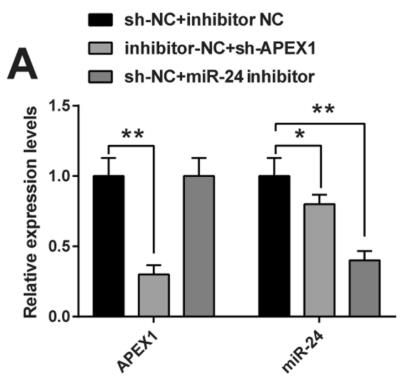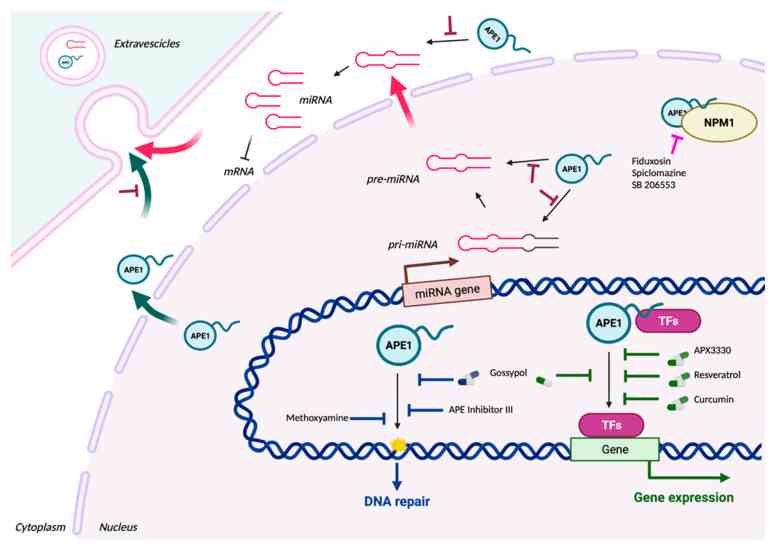Recombinant Human APEX1 protein(Pro2-Leu318), His-tagged
| Cat.No. : | APEX1-2497H |
| Product Overview : | Recombinant Human APEX1 (P27695) (Pro2-Leu 318) was expressed in E. coli, with a polyhistidine tag at the N-terminus. |
| Availability | April 20, 2025 |
| Unit | |
| Price | |
| Qty |
- Specification
- Gene Information
- Related Products
- Case Study
- Application
- Download
| Species : | Human |
| Source : | E.coli |
| Tag : | His |
| Protein Length : | Pro2-Leu318 |
| Form : | Lyophilized from sterile PBS, pH 7.8. Normally 5 % - 8 % trehalose, mannitol and 0.01% Tween80 are added as protectants before lyophilization. |
| Molecular Mass : | The recombinant human APEX1 consisting of 328 amino acids and migrates as an approximately 37 kDa band in SDS-PAGE under reducing conditions as predicted. |
| Endotoxin : | < 1.0 EU per μg of the protein as determined by the LAL method. |
| Purity : | > 92 % as determined by SDS-PAGE |
| Storage : | Samples are stable for up to twelve months from date of receipt at -20°C to -80°C. Store it under sterile conditions at -20°C to -80°C. It is recommended that the protein be aliquoted for optimal storage. Avoid repeated freeze-thaw cycles. |
| Reconstitution : | It is recommended that sterile water be added to the vial to prepare a stock solution of 0.2 ug/ul. Centrifuge the vial at 4°C before opening to recover the entire contents. |
| Gene Name | APEX1 APEX nuclease (multifunctional DNA repair enzyme) 1 [ Homo sapiens ] |
| Official Symbol | APEX1 |
| Synonyms | APEX1; APEX nuclease (multifunctional DNA repair enzyme) 1; APEX, APEX nuclease (multifunctional DNA repair enzyme); DNA-(apurinic or apyrimidinic site) lyase; APE; APE 1; APEN; APX; HAP1; REF 1; REF1; AP lyase; protein REF-1; redox factor-1; AP endonuclease class I; apurinic-apyrimidinic endonuclease 1; apurinic/apyrimidinic (abasic) endonuclease; deoxyribonuclease (apurinic or apyrimidinic); APE1; APEX; |
| Gene ID | 328 |
| mRNA Refseq | NM_001244249 |
| Protein Refseq | NP_001231178 |
| MIM | 107748 |
| UniProt ID | P27695 |
| ◆ Recombinant Proteins | ||
| APEX1-0348H | Recombinant Human APEX1 Protein (Pro2-Leu318), Tag Free | +Inquiry |
| APEX1-617M | Recombinant Mouse APEX1 Protein, His (Fc)-Avi-tagged | +Inquiry |
| APEX1-353R | Recombinant Rhesus monkey APEX1 Protein, His-tagged | +Inquiry |
| Apex1-623M | Recombinant Mouse Apex1 Protein, MYC/DDK-tagged | +Inquiry |
| APEX1-4792H | Recombinant Human APEX1 Protein, Myc/DDK-tagged, C13 and N15-labeled | +Inquiry |
| ◆ Cell & Tissue Lysates | ||
| APEX1-8796HCL | Recombinant Human APEX1 293 Cell Lysate | +Inquiry |
| APEX1-8797HCL | Recombinant Human APEX1 293 Cell Lysate | +Inquiry |
Case 1: Gautam A, et al. Mol Cell. 2023
Exposure to UV light can cause "bulky" DNA lesions like (6-4)-photoproducts and cyclobutane pyrimidine dimers. These are usually repaired through nucleotide excision repair, a process that doesn't work well in the disease xeroderma pigmentosum, linked to sensitivity to sunlight and cancer. While some organisms fix these photodimers with simpler enzyme methods, humans didn't seem to have such pathways—until now. We've discovered that normal human cells do have a mechanism using DNA base excision repair. This involves NTH1, APE1, PARP1, XRCC1, and FEN1, which efficiently tackle some photodimers after UVC exposure. When these proteins are missing, repair in normal cells slows down and becomes nonexistent in xeroderma pigmentosum cells, making them more sensitive to UVC. This finding shows that human cells can handle photodimers using a modified base excision repair separate from the traditional nucleotide excision repair.

Fig1. Model for BER-mediated photodimer repair. NTH1/APE1-mediated incision of a UVC-induced BER substrate.

Fig2. Levels of XRCC1, APE1, and XPA protein levels in the indicated gene-edited RPE-1 cell clines.
Case 2: Tan A, et al. Arch Gynecol Obstet. 2021
This study explored how APEX1 behaves abnormally in endometrial stromal cells and what's going on behind the scenes. They checked APEX1 and miR-24 levels in endometriosis tissue using qRT-PCR and Western blot. After tweaking the cells, they were put into different groups to see how that affected things like cell growth and death. They found that APEX1 and miR-24 were high in endometriosis, boosting cell growth and blocking cell death. But when APEX1 and miR-24 were reduced, those effects flipped. These proteins also influenced the levels of proteins related to cell death, and APEX1 linked closely with miR-24 expression.

Fig1. The protein levels of APEX1 in endometriosis tissues were tested by Western blot assay.

Fig2. APEX1 targeted miR-24 expression.
Recombinant Human APEX1 plays a key role in both research and industrial fields, especially in how cells handle oxidative stress. This multifunctional protein is essential for DNA repair and regulating the redox status of transcription factors. It's particularly important in the base excision repair (BER) pathway, acting as an AP endodeoxyribonuclease to fix DNA damage from oxidative and alkylating agents. Besides, APEX1 modulates the redox state of various transcription factors and cell cycle proteins, impacting cell signaling, gene expression, and the ability to respond to oxidative stress. Hence, recombinant APEX1 is widely used to study DNA repair, oxidative stress responses, and the mechanisms of related diseases, as well as in drug screening and therapeutic research.

Fig1. Illustration of the main functions of APE1 and its relative inhibitors. (Matilde Clarissa Malfatti, 2023)
Not For Human Consumption!
Inquiry
- Reviews
- Q&As
Ask a Question for All APEX1 Products
Required fields are marked with *
My Review for All APEX1 Products
Required fields are marked with *
Inquiry Basket


